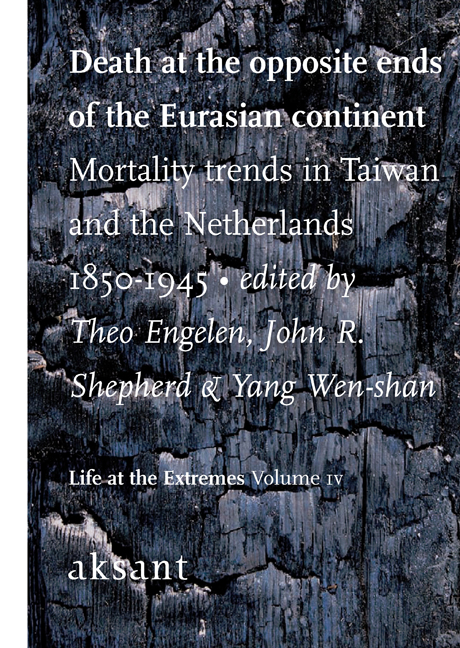 Death at the Opposite Ends of the Eurasian Continent
Death at the Opposite Ends of the Eurasian Continent Published online by Cambridge University Press: 22 January 2021
Introduction
In 1965, the World Health Organization registered Taiwan on its list of countries where malaria eradication had been achieved. This remarkable achievement has often been presented as a story of scientific conquest, and modern anti-malaria measures undertaken during the colonial period from 1895 to 1945 have been hailed simply as a positive legacy of Japan's medical and public health work. Recent studies, however, have not been satisfied with viewing these events in abstract scientific terms, but have tried to interpret medical developments within an existing colonial context. They have criticized the heroic narrative of the progress of science (or medicine), and emphasized the close relationship between medicine and colonial power. Medicine as “the tool of empire,” is a dominant theme in the historiography of colonial anti-malaria policy and its practice. These studies consider colonial malaria countermeasures and modern malariology as a “tool” used to ensure the wellbeing of the Japanese colonial government and the home country by protecting the health of Japanese elites and settlers, to eliminate obstacles to natural resource development, and to demonstrate the efficacy of colonial rule. In addition, these studies emphasize that the malaria countermeasures were “imposed from above,” rather than “evolved from below” through interaction with the colonized Taiwanese people. In this view, the hegemonic and coercive power of the colonial administrative system validated the effectiveness of malaria control (Fann 1994, 1996; Yip 2000, 2001).
These studies have sketched the contours of anti-malaria policy in colonial Taiwan. Yet many questions remain. First, they tend to paint a static picture of the development of anti-malaria policy in Taiwan, shaped by concern for short-term effectiveness and economic or political interests of the colonizers at a particular time without examining carefully policy changes that occurred during the entire colonial period. In fact, the making of anti-malaria policy was a dynamic process: whereas the initial objective was suppression of malaria through modern biomedical science, the motive of eradicating malaria appeared in the 1920s. This led to a change in the direction of the policy which should be understood in the context of the Japanese cultural perception of the disease as well as the subtle change of relationship that took place between the colonizer and the colonized after the initiation of Japan's assimilation policy in 1919.
To save this book to your Kindle, first ensure [email protected] is added to your Approved Personal Document E-mail List under your Personal Document Settings on the Manage Your Content and Devices page of your Amazon account. Then enter the ‘name’ part of your Kindle email address below. Find out more about saving to your Kindle.
Note you can select to save to either the @free.kindle.com or @kindle.com variations. ‘@free.kindle.com’ emails are free but can only be saved to your device when it is connected to wi-fi. ‘@kindle.com’ emails can be delivered even when you are not connected to wi-fi, but note that service fees apply.
Find out more about the Kindle Personal Document Service.
To save content items to your account, please confirm that you agree to abide by our usage policies. If this is the first time you use this feature, you will be asked to authorise Cambridge Core to connect with your account. Find out more about saving content to Dropbox.
To save content items to your account, please confirm that you agree to abide by our usage policies. If this is the first time you use this feature, you will be asked to authorise Cambridge Core to connect with your account. Find out more about saving content to Google Drive.